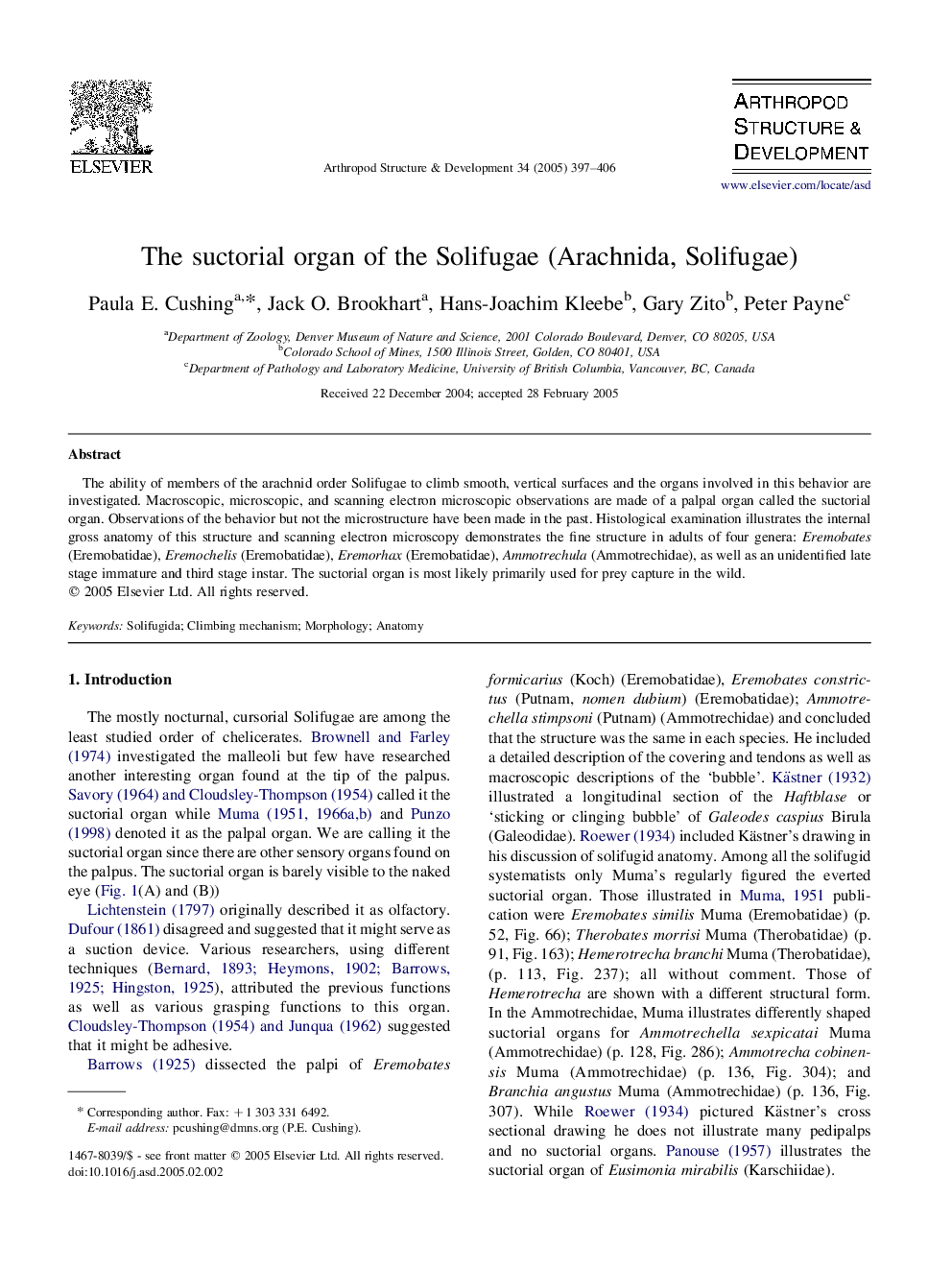| Article ID | Journal | Published Year | Pages | File Type |
|---|---|---|---|---|
| 9104147 | Arthropod Structure & Development | 2005 | 10 Pages |
Abstract
The ability of members of the arachnid order Solifugae to climb smooth, vertical surfaces and the organs involved in this behavior are investigated. Macroscopic, microscopic, and scanning electron microscopic observations are made of a palpal organ called the suctorial organ. Observations of the behavior but not the microstructure have been made in the past. Histological examination illustrates the internal gross anatomy of this structure and scanning electron microscopy demonstrates the fine structure in adults of four genera: Eremobates (Eremobatidae), Eremochelis (Eremobatidae), Eremorhax (Eremobatidae), Ammotrechula (Ammotrechidae), as well as an unidentified late stage immature and third stage instar. The suctorial organ is most likely primarily used for prey capture in the wild.
Keywords
Related Topics
Life Sciences
Agricultural and Biological Sciences
Insect Science
Authors
Paula E. Cushing, Jack O. Brookhart, Hans-Joachim Kleebe, Gary Zito, Peter Payne,
